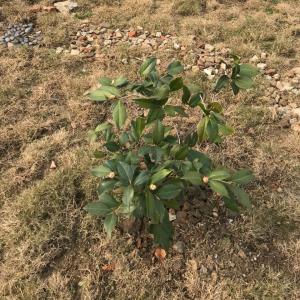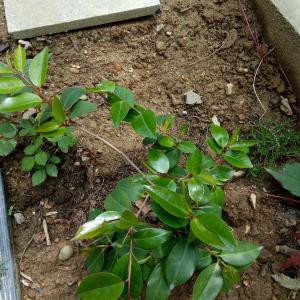动态 (175)
Zeev Kwan
2022年09月05日

What Is Deep Teeth Cleaning?
Deep teeth cleaning to remove plaque and tartar from your teeth is an effective way to reduce gum inflammation and improve gum health. Plaque develops on the tooth’s surface. It contains bacteria and is developed when food particles combine with saliva. Plaque accumulates on teeth daily and can be removed by brushing them. However, plaque in between your teeth cannot be removed by brushing. The calcification or hardening of plaque leads to the formation of tartar. Gum disease can be brought on by plaque or tartar build up. This includes gingivitis, a gum condition characterized by inflammation. Without treatment for gingivitis, periodontitis can develop. This is a serious infection that destroys the bone that holds your teeth in place.How Does Deep Cleaning of Teeth Benefit You?
If gum disease causes your gums to move away from your teeth, leaving a space more than 5 millimeters (mm) deep, you might need a deep cleaning. Your gums and teeth may become further separated if gum disease worsens. Tooth loss or loose teeth may result from these conditions weakening the bones supporting your teeth. Dentists recommend deep cleanings for several reasons, including: 1. Preventing gum disease from progressing 2. Promoting healing and treating an infection 3. Keeping your teeth clean above and below the gum line 4. Getting rid of bad breath caused by gum disease 5. Protecting teeth rootsDo Deep Cleanings Have Any Disadvantages?
Deep cleaning can treat gum disease, but the procedure is not without risks. Deep cleaning teeth has the following disadvantages: 1. Nerve damage is possible 2. No assurance of your gums reattaching to your teeth 3. Gums may recede 4. Compromised immune system may result in possible infections 5. Pain and sensitivity In most cases, deep cleaning is associated with minimal risks. The effects typically last for only five to seven days. However, in extensive cases, this may extend to a few weeks.What Does A Thorough Dental Cleaning Entail?
There is a difference between routine and deep teeth cleanings. Plaque and tartar are removed from the upper gum line by a regular dental cleaning. In contrast, deep cleanings remove plaque and tartar from within the gum line. The gums and teeth can become separated when you have gum disease, causing tartar and plaque to accumulate between them. Getting rid of this build up requires cleaning beneath the gumline.Deep Cleaning Involves Gum Scaling and Root Planing
The deep cleaning involves gum scaling and root planing and usually takes two to three visits. Each visit may take between an hour and two hours to complete. Removing plaque and tartar from below the gum line during the tooth scaling appointment is necessary. During the root planning procedure, the dentist removes plaque and tartar build up around the roots of your teeth. As a result of this treatment, the amount of space between your teeth and gums will be reduced and your gums will be able to reattach to your teeth.Antibiotics may be necessary
You may need antibiotics for a few days when your immune system is compromised. The procedure may leave you susceptible to infection afterward. The release of bacteria into the bloodstream can also occur during deep dental cleanings.Does Deep Cleaning Hurt?
To minimize discomfort, the gums will be numbed with a topical or local anesthetic during teeth scaling and root planing. Depending on the treatment, you may experience some sensitivity following the procedure. There is a possibility that your gums will swell, and you may experience some minor bleeding as well.Reducing Sensitivity After the Procedure
It is recommended that in the first few days after the procedure, you should eat soft foods (yogurt, apple sauce, or mashed potatoes) to reduce sensitivity. It is also essential to avoid foods and beverages that are too hot or too cold. To reduce inflammation, it is advisable to take pain medications such as acetaminophen or ibuprofen while also rinsing the affected area with warm salt water. Maintaining good oral hygiene promotes healing and reduces gum inflammation. It is recommended to gently brush your teeth twice a day, and floss at least once.The Cost of Deep Teeth Cleaning
Depending on the severity of gum disease or inflammation, the cost of deep cleaning may vary. You may need two visits to remove tartar and plaque altogether, but some people may need as many as four. This type of cleaning is done in quadrants. According to where you live or how much treatment you require, you may have to pay $100 or more per quadrant. Deep cleanings are usually covered by dental insurance.Conclusion
Deep cleaning of the teeth promotes the healing of gum disease as well as the prevention of bad breath. It is important to be aware of the potential side effects or complications associated with deep cleanings. Even though this is a safe and standard procedure, there may be some swelling and sensitivity afterward. After your procedure, visit your dentist if swelling, bleeding, or pain persists.
文章
Zeev Kwan
2022年08月29日

A guide to brushing your teeth correctly
You can brush your teeth simply with a toothbrush with a nylon bristle and plastic handle. You should be able to complete the process in about two minutes. The more you practice, the more you will understand how long 2 minutes can feel when you are brushing your teeth. Water should be used to lubricate your brush. Apply toothpaste to the toothbrush head in a small amount, about the size of a pea. Brush your front teeth with a gentle, short stroke while angled 45 degrees toward your gums. Don't forget to brush your chewing surfaces, back molars, and the outer sides of your teeth. Your top front teeth should be cleaned from the inside by flipping the toothbrush upside down. Your bottom front teeth inside the surface can be accessed by flipping the toothbrush over. While brushing your teeth, brush your tongue to remove any plaque or bacteria that has built up there. In a clean sink, swallow toothpaste remnants, saliva, and water. Cold water should be used to rinse your mouth afterward.Take care of your braces while brushing
A few extra steps are involved in brushing your teeth when you have braces. •If you have removable braces or rubber bands, remove them first. If you want to reapply them, you need to rinse them first. •A small amount of toothpaste and some water should be added to your toothbrush. •Ensure you clean under your wires and pins as well as around your braces. •Your braces' wires should be brushed regularly to prevent plaque and bacteria from forming. •Be sure to brush your teeth for at least two minutes moving from one side of the mouth to the other. •The tongue should be gently brushed. •If there is any toothpaste or saliva left, spit it out. Make sure your braces are clean by rinsing with water and checking the mirror.What your children should do when brushing their teeth
You might want to consider fluoride-free toothpaste or toothpaste with much less fluoride for children under 3 years old. Until their teeth have fully erupted, a baby's teeth may start to decay, so teach them good dental hygiene early. You should use a soft, child-sized toothbrush, water, and a pea-sized or rice grain-sized smear of toothpaste (if your child is under 3). Your child should brush their teeth slowly from back to front and sides. If their teeth haven't erupted yet, brush their gums as well. Make sure to brush your child's tongue. Have them practice rinsing their mouth and spitting out their toothpaste.Brushing without toothpaste: How to do It
There are several ingredients to consider when selecting toothpaste, whether you are traveling and forgot to bring it or just looking for a better natural way to brush your teeth.Using coconut oil is beneficial
Coconut oil has antibacterial properties, so it's effective at fighting bacteria in your mouth. As an alternative to toothpaste, it can also dissolve plaque. Gum disease and tooth decay are also prevented by it. The benefits of coconut oil are overshadowed by the downsides of using fluoride in your toothpaste. However, it can still be used for "oil pulling" and brushing your teeth.The active charcoal
In a hotel, for example, if you're without toothpaste late at night, this option might not work since most people don't have extra activated charcoal tablets lying around. You can, however, clean your teeth with activated charcoal toothpaste and pure activated charcoal. However, activated charcoal wears down enamel and can be abrasive, so it shouldn't be used daily. In addition, it lacks fluoride, which makes it more likely you will decay your teeth if you choose this toothpaste instead of your traditional fluoride toothpaste.Sodium bicarbonate
Baking soda is often added to toothpaste to enhance its whitening capabilities. Your teeth can be cleaned with baking soda by removing stains. Plaque is also removed effectively by it. Suppose you run out of toothpaste for the night and are in a pinch. In that case, you might consider using a baking soda paste as an alternative. Since baking soda does not contain fluoride, you will miss out on the enamel-protecting benefits of fluoride over time. Finally, brushing your teeth may look different depending on what stage of your life you are in. What's certain is that brushing your teeth shouldn't be avoided or skipped under any circumstances. Keeping your teeth healthy and your smile bright is as simple as brushing twice a day for 2 minutes each time.
文章
Zeev Kwan
2022年08月29日

How to floss?
1. Cut dental floss into 18-24 inches pieces. Your middle fingers should be wrapped around most of the floss in order to hold it correctly. If you are flossing your teeth, the floss you need should only be 1 or 2 inches long. Keep your thumb and index fingers tight as you hold the floss. 2. You should insert dental floss between two teeth. Brush both sides of each tooth with the floss, gliding it up and down. The floss should not touch your gums. Your gums may be scratched or bruised as a result. 3. When the floss reaches your gums, it should be wrapped around your teeth. In this way, floss can reach the cavity between your teeth and gums. Moving from one tooth to another, repeat the steps. Make sure each section of floss you use is clean and new for each tooth.When you have braces, how should you floss?
When you have braces, flossing can be a challenge, and it takes more time than when you don't have braces. Flossing your teeth with regular floss should take you between 10 and 15 minutes. You should instead use waxed floss with braces so that it won't tear or get stuck in your braces. Waterpiks, a type of water flosser, and floss threaders are other options you can use to floss under braces instead of waxed floss. Flossing can be made easier with both.What is the best time to floss?
A healthy mouth also depends on knowing when to floss. Brushing teeth first and flossing afterward is common among some people. Generally, though, it's recommended to floss before brushing. Brushing removes foreign objects from your mouth, but flossing helps lift them out. By brushing first and flossing afterward, you will not be able to remove the food and plaque from your mouth until you brush again. Daily flossing is recommended according to the American Dental Association in order to keep your teeth healthy.What types of dental floss are available?
You can choose from different types of dental floss. If you have braces or bridges and have enough space between your teeth, it is best to use floss that is suitable for you. Dental floss can be used more easily in wide spaces than in tight spaces depending upon the type.There are several types of dental floss, including:
1. Tape for dental use. If you have braces, gaps, or large spaces between your teeth, this type of dental floss is broader and flatter like a ribbon. 2. An ordinary floss. This nylon strand is thin and easily fits between teeth. Flavored or unflavored, waxed or unwaxed, it comes in different shapes and sizes. 3. With wax-coated dental floss, it is easier to get between teeth that are close together. 4. There are super flosses. With this floss threader, you can thread dental floss around gapped teeth, orthodontic braces, and bridges. You can floss underneath appliances with the stiffened end, around devices with spongy floss, and underneath your gum line with regular floss.Other tools to make flossing easier
Furthermore, waxed floss, floss threaders, and other tools can make flossing easier and faster. Electric flossers or water flossers remove plaque and food between teeth using water and pressure. It is an excellent option if you find it challenging to use regular floss, as they are both great alternatives. Braces can also benefit from a water flosser. Wires and brackets can be cleaned with this device. Disposable floss picks are another option. Flossing the back of your mouth can be difficult without these tools, but they make flossing a breeze. Therefore, the importance of good oral hygiene goes beyond brushing your teeth. The process of keeping your teeth clean also includes flossing your teeth on a regular basis. You can protect your teeth from decay and gum disease by regularly flossing and removing bacteria, plaque, and food between your teeth. Regular dental cleanings should be scheduled at least twice a year in addition to regular brushing and flossing.
文章
Zeev Kwan
2022年08月18日

So, what exactly causes bad breath?
The cause of bad breath is typically bacteria in the mouth. In most cases, poor dental hygiene contributes to bad breath. When you eat, your teeth get clogged up with food, and these bits of food grow bacteria that produce sulfur compounds that stink. Brushing and flossing frequently are essential for maintaining a healthy mouth because bacteria continue to grow in your mouth, building up a thin film called plaque on your teeth. When plaque isn't brushed away at least twice a day, it produces a foul odor and leads to another smelly process known as tooth decay.How can bad breath be eliminated?
Depending on the severity of your bad breath, there are several ways to treat it.Maintaining good oral health
Researchers have found that bad breath is most often caused by poor dental hygiene. Keeping teeth healthy means brushing them twice a day for two minutes, using fluoride toothpaste (morning and night). Preventing plaque buildup is essential for maintaining a healthy mouth. Some believe brushing after every meal is necessary to prevent decay and bad breath. The tongue can also accumulate bacteria, causing it to smell foul. This thin layer of film can be removed by tongue scraping. What is tongue scraping, you might ask? Tongue scraping is when you brush or scrape your tongue with your toothbrush or a tongue scraper. This can also be done two times a day.Stay hydrated
The causes of bad breath are often connected to mouth dryness. Sleeping naturally dries out your mouth, which is why morning breath is usually worse. A daily intake of eight glasses of water is recommended in order to stay hydrated. When your mouth feels dry, drink plenty of water (don't drink juice or soda since these can dry your mouth out even more). In addition to keeping your mouth clean, saliva inhibits the growth of bacteria that cause bad breath. The saliva in your mouth is essential for keeping it clean as bacteria thrive without it. Bad breath can also be naturally treated by gargling salt water. For every 8 ounces of warm water, add half a teaspoon of salt. Give the mixture a swig and spit it out after 30 seconds. As needed, repeat the process.Using apple cider vinegar
Does your breath smell of onions or garlic? The best way to eliminate breath odors is by mixing apple cider vinegar with water and swishing it around the mouth. Make sure you gargle for 30 seconds before spitting it out.Milk and yogurt
Believe it or not, bad breath can also be treated with milk and yogurt. According to some sources, drinking milk after eating garlic improves "garlicky" breath significantly. One serving of plain, nonfat yogurt daily will help you fight bad breath. As soon as you finish a meal containing strong-smelling foods like garlic or onions, drink a glass of milk. Lactobacillus, a healthy bacteria found in yogurt, can also support the body, like your gut.Maintain a healthy diet by eating fruits and vegetables
How can fruits and vegetables freshen your breath? Using apple, celery, and carrots as brushes, your teeth can be cleaned naturally. Several studies have indicated that raw apples can help combat garlic breath. Garlic's foul-smelling compounds are neutralized by some natural compounds in apples. In addition to deodorizing the mouth, it balances the compounds in the bloodstream, which is especially beneficial for people with persistent garlic breath. Vitamin C in oranges promotes good dental hygiene by increasing saliva production. In the absence of saliva, foul-smelling bacteria cannot be washed away, which is why many people suffer from bad breath. Oranges are among the fruits rich in vitamin C. Oranges make a healthy dessert and promote good dental hygiene simultaneously.Zinc
It is possible to counteract bad breath with zinc salts, commonly found in mouthwashes and chewing gum. Zinc-containing solutions can be effective for at least 6 months in reducing bad breath when rinsed regularly. Try a zinc chewing gum designed for people with dry mouths. Alternatively, dietary zinc supplements can be bought online or at local drug stores.You can chew gum
Gum helps clean your mouth of nasty bacteria and leftover food particles by stimulating saliva production.How to know when to consult a doctor
Improved dental hygiene can treat most cases of bad breath originating in the mouth. Nevertheless, some cases of bad breath are signs of more severe health conditions, such as diabetes ketoacidosis, kidney failure, or infections. Consult your dentist or doctor if you don't see improvement in your bad breath with home treatment.
文章
Zeev Kwan
2022年08月18日

1. Best – Milk
As a result of the lactic acid in milk, your enamel may become lighter. In addition, it stimulates saliva production, which is believed to help wash away bacteria that cause cavities. Also, milk's casein protein prevents stains, and plaque is prevented from accumulating when calcium phosphates are recruited by casein. In another 2014 study, casein was found to bind to polyphenols in tea, which prevents tannins from bonding to teeth and staining them. Lactic acid and casein are also contained in other dairy products, including cheese and yogurt.Worst – Carbonated drinks
Even if the can says "diet," soda or pop offers little good. The effects of carbonated soda on your teeth are even more severe than those caused by methamphetamine and crack. Plaque produces more acid when carbonated sodas are consumed. You essentially coat your teeth with acid if you drink soda all day. As a result, you have less saliva because it dries out your mouth. Lastly, consuming dark-colored soda can discolor your teeth or stain them. After drinking a soda, don't brush your teeth right away. There is a possibility that this could speed up the decay process.2. Best – Nuts
It is extremely healthy to snack on nuts to keep your teeth healthy. According to the American Dental Association, they contain calcium, which strengthens the enamel. Replace empty-calorie snacks with almonds.Worst – Dried Fruits
People often mistake dried fruits for healthy snacks. Although that may be true, dried fruits such as figs, raisins, apricots, and prunes tend to be sticky. Because dried fruits are sticky, they easily cling to teeth and crevices, leaving sugar behind. When you do eat dried fruits, rinse your mouth with water afterward. You should then brush and floss. The new versions of dried fruits are less concentrated with sugar, making them a healthier choice!3. Best - Fiber-rich fruits and vegetables.
According to the American Dental Association (ADA), fiber helps keep teeth and gums healthy. Additionally, they stimulate saliva flow. Taking these steps and caring for your teeth at home can prevent gum disease and cavities. It takes about 20 minutes after eating something high in sugar or starch for saliva to reduce the impact of acids and enzymes on your teeth. Phosphorus and calcium are both present in saliva. Consequently, teeth that have lost minerals due to bacterial acids are demineralized.Worst – Citrus
Vitamin C is abundant in oranges, grapefruits, and lemons. Their acid content makes them more prone to decay since they contain more sugar. A drink can be acidified simply by squeezing lemon or lime into it. In addition, mouth sores can be irritated by citrus acid. Drink and eat them in moderation at mealtime if you want to get the antioxidants and vitamins they contain.4. Best - Green and black teas.
Plaque bacteria are inhibited by polyphenols in both of these teas. In either case, these substances kill or prevent bacteria from multiplying. It prevents bacteria from growing and causes acid to attack teeth. Fluoride can also be found in tea, depending on your water.Worst – Bread
When you're in the supermarket, take a second before considering the bread aisle, because when you chew bread, the starches break down into sugar in your saliva. A gummy paste is formed when the bread is chewed and sticks to crevices between teeth and cavities can result from that. For carb cravings, choose whole wheat or less-refined varieties because there are fewer added sugars in these, and they are more resistant to breakdown.5. Best – Foods with Fluoride
It is beneficial for your teeth to drink fluoridated water or consume products containing fluoridated water. Dehydrated soups and powdered juices (if they are not too sweet) fit this category. The fluoride found in poultry products, seafood, and powdered cereals can be absorbed through the mouth through commercially prepared foods.Worst – Ice
Ice is only water, so chewing it is okay, right? The American Dental Association disagrees. When you chew on hard substances, you are more likely to suffer dental emergencies, such as broken, chipped, cracked teeth or loose crowns. Using ice to keep beverages cold is fine, but chewing it isn't. Drink chilled water or drinks without ice instead of giving in to the urge to eat. The same foods that are healthy for your body will also be healthy for your teeth. Keep your beverage choices limited to fluoridated water or unsweetened tea and opt for fresh foods whenever possible. Consume vitamin- and nutrient-rich foods every meal and avoid sugary or starchy foods. The rule of thumb is to brush twice a day and floss every day, regardless of what you eat or drink.
文章
Zeev Kwan
2022年08月11日

1. Apply Honey
Acting as a wonderful emollient, raw honey moisturises the skin and makes it smooth and supple. In order to combat skin dryness, the sugar in honey works as a humectant to draw moisture to the skin's surface and boost its hydration levels. Because it helps unclog skin pores and cleanses the skin, honey is also effective as an anti-acne treatment. It contains a lot of antioxidants, which guard against inflammation, acne, and skin ageing. As a result, regularly applying honey to your skin can help it become healthier and more radiant.How to use:
*Use 2 tbsp of honey and 8 tbsp of water to make a paste, then apply it to your skin. After it has dried, remove it with warm water. *As an alternative, directly apply raw honey to your skin. After 20 minutes of treatment, massage in the honey and then thoroughly rinse.2. Utilize Coconut Oil
The fatty acids in coconut oil moisturise the skin. It enhances the skin barrier and increases collagen formation. Moreover, coconut oil has antimicrobial qualities that can be used to treat eczema and acne. Coconut oil provides deep moisturization and is easily absorbed by all skin types.How to use:
*Coconut oil can also be used as a daily moisturiser after a shower. *Additionally,cracked skin can be healed using coconut oil. Simply massage the oil into dry hands and heels before covering them with nonlatex gloves and thick socks, respectively.3. Put Olive Oil
Because it contains squalene, olive oil is another fantastic moisturiser. Also, it has a lot of antioxidants, which limit the harm done by free radicals. Olive oil also reduces water loss, which keeps the skin hydrated for a longer period of time. Vitamin E, which has anti-inflammatory properties and delays the ageing process of the skin, is another important component of olive oil. Therefore, using olive oil can increase the skin's level of moisture and guard against oxidative damage, which is caused by exposure to the sun.How to use:
After taking a shower, massage olive oil into damp skin. Almond oil can also be used in place of olive oil.4. Use Handmade Soaps
Shea butter, honey, coconut milk, and almonds are just a few examples of natural ingredients you may use to make handmade soaps that are both nourishing and gentle on the skin. Using homemade soaps can give your skin an even tone and a healthy glow by removing wrinkles, blemishes, and other imperfections. Aloe vera soap, shea butter and coconut milk soap, goat milk soap and avocado soap are a few of the hydrating and nourishing homemade soaps available.5. Utilize Rosehip Oil
Fatty acids like linoleic acid, which are rich in rosehip oil, thoroughly nourish and moisturise the skin as they are easily absorbed by the skin. Rosehip oil can also assist to retain moisture, keeping the skin hydrated for a longer period of time.How to use:
Apply rosehip oil directly on the skin three times per day.6. Try Body Butters
Body butters have hydrating properties because of their high water content. They also contain several essential oils that deeply moisturise the skin. These rich body butters aid in treating dry, rough, and dull skin. They can saturate the skin with minerals and fatty acids by penetrating deeply. Use organic body butters such as shea, palm, cocoa, and mango.How to use:
Applying body butters before the night is recommended because of how slowly they are absorbed by the body. Your skin's health and appearance can be greatly improved by regularly moisturising it. Moisturizing not only keeps your skin healthy and nourished, but it also makes it supple, has an even tone, and fights the effects of ageing.
文章
Zeev Kwan
2022年08月11日

1. Regularly Wash Your Hair
Regular hair washing keeps your scalp and hair clean and clear of excess oil and dirt. However, the ideal frequency will differ depending on your hair type and preferences. If your hair is extremely dry, limit your washing to twice a week. If you have an oily scalp, washing your hair every other day will help.2. Use Shampoos Free of Chemicals
The environmental factors that damage your hair are completely beyond your control, but you can choose which shampoos to use. Your hair will be healthier if your shampoo contains fewer chemicals. Choose gentle shampoos that go with your hair type. In shampoos, sulphates and parabens are used to lather and preserve hair, respectively. However, these ingredients may cause skin irritation and increase the risk of hormone disturbances over time.3. Deep Conditioning
Even though you condition your hair after each wash, deep conditioning is still the best option. Every now and again, shampoo your hair, squeeze out the excess water, and towel dry it. Next, apply conditioner directly to the hair's root using generous amounts. Use a comb with wide teeth to ensure the conditioner is distributed evenly throughout your hair. Rinse thoroughly after leaving the conditioner for 10 minutes to an hour and enjoy silky smooth hair.4. Dry Your Hair Naturally
We are aware that your hair become as gorgeous as that of your on-screen idol after blow drying. But using too much heat when styling your hair can harm the scalp. However, styling your hair with too much heat might damage the scalp. If you still need to style, keep it for special occasions only. Using a towel or the air to dry off after washing is the best option. Never comb wet hair or sleep with it in. The cuticle of your hair can be damaged by vigorous towel rubbing. Be kind.5. Properly Oil Your Hair
Pre-shampoo therapies that include massaging and oiling the scalp increase blood flow, calm your muscles, enhance shine, and nourish the hair. Additionally, it promotes hair development, replenishes moisture, and repairs split ends. Castor oil, olive oil, almond oil, and coconut oil are among the options available to you. Avoid using mineral oil on your hair.6. Hair Masks Made at Home
Some may even be good enough to eat, but the majority smell really bad! However, the beautiful thing is that your pantry likely contains all of the items. 1. Mustard oil, egg, and curd-The solution to all of your issues are right here if you have dry hair that looks like hay. Vitamins A, B12, D, and E, fatty acids, and protein are all abundant in eggs. The fatty acids make it a natural hair conditioner, the B12 helps build volume, and the protein helps strengthen the roots. 2. Avocado with peppermint oil-Also known as the butter pear, avocados are creamy, rich, and the only fruit that combines the protein of meat, the fat of butter, the vitamins, and the minerals of green vegetables, in addition to having a nutty flavour. Apply this treatment to your hair by mashing some avocado, adding a few drops of peppermint oil, and mixing well. Wash it off after 15 to 20 minutes. 3. Olive oil, coconut oil, and egg-This is the best mask for quick hair development. Apply two eggs, two tablespoons of olive oil, and two tablespoons of warm coconut oil after letting the mixture cool. You can therefore say goodbye to poor hair days by using chemical-free products designed for your particular hair type, eating healthily, avoiding heat styling, and following all the above advice! The most important thing is to see a doctor if you have severe hair loss and damage despite having a healthy hair care routine.
文章
Zeev Kwan
2022年08月11日

Benefits of Apple Cider Vinegar for Skin
1. Balances the skin's pH:
Apple cider vinegar can assist in balancing the pH of the outer skin layer, which may maintain your skin functioning at its best by dealing with germs that can cause acne and creating the appropriate amount of oil.2. Exfoliates:
Malic acid, which is present in apple cider vinegar is similar to alpha-hydroxy acid. Malic acid is effective at treating acne-prone skin because it gently exfoliates to unclog pores and get rid of bacteria.3. Fights acne and blackheads:
Baking soda and water mixed with apple cider vinegar can be used to exfoliate the skin and lessen the appearance of blackheads. Apple cider vinegar also has antimicrobial properties.4. Improves hyperpigmentation:
Malic acid in apple cider vinegar may aid to improve hyperpigmentation by eradicating issues like dark patches. Malic acid is well known for its capacity to reduce melanin synthesis. Malic acid is excellent in reducing hyperpigmentation because melanin is what gives the skin its pigmentation.5. May prevent and treat certain skin conditions:
Due to its anti-microbial and antibacterial qualities, ACV may help prevent some skin infections, notably those brought on by sunburn.Application of apple cider vinegar on the face
Apple cider vinegar is a common ingredient in many home remedies for skin care. Here are some ideas for using apple cider vinegar in homemade facial products. Some of the products listed below may not be suitable for you if you have sensitive skin.ACV Face Wash
Oil, dirt, and other particles can be removed from your face by washing it every day. Utilizing a face wash or cleanser is the greatest approach to have your skin as clean as a whistle. Apple cider vinegar works well as a face cleanser to remove dirt and bacteria from the skin. Mix the following ingredients to make a homemade apple cider vinegar face wash: *1/4 cup warm water *Apple cider vinegar, 1 tablespoon As opposed to using harsh soaps or chemicals, use apple cider vinegar to clean gently.ACV Toner
Cleaning and tightening the skin with a toner helps to protect it from bacteria and other pollutants. Because it is an astringent, apple cider vinegar can be used as a toner. The following is the recipe for using apple cider vinegar as a skin toner: *1 part apple cider vinegar *2 parts pure water You can use a cotton ball or pad to apply this mixture to your face after washing your face with a face cleanser. This mixture can be further diluted before usage if your skin is very sensitive to specific skin care products.ACV Spot Treatment
The quickest approach to stop rogue blemishes as soon as they arise is with a spot treatment. Simply dab a small amount of apple cider vinegar into the spot using a cotton swab or cotton ball that has been soaked. Because apple cider vinegar has strong antimicrobial properties, it might aid in delaying the full development of those bothersome pimples.The Takeaway
Due to its antibacterial properties, apple cider vinegar is a popular addition to skin care products as well as a healthy food ingredient. There are numerous methods to utilise apple cider vinegar on your face, from a DIY cleanser to a spot treatment for acne.
文章
Zeev Kwan
2022年08月11日

Causes of Sagging Skin:
Skin sagging is brought on by a variety of factors as we get older. These causes could be internal (intrinsic ageing) or external (Extrinsic ageing).Intrinsic ageing
The process of intrinsic ageing happens over time. Depending on the person, intrinsic ageing might happen more quickly or slower. Let's examine what precisely occurs with intrinsic ageing.1.Elastin loss
Elastin is a protein that gives the skin its tightness and elasticity.The amount of elastin in the skin decreases with age, causing the skin to lose its suppleness and elasticity and hang loose.2.Decrease in Collagen
Collagen's major job is to maintain the skin's firmness and tautness. The amount of collagen in one's skin decreases with age.3.Fat loss
The sagging of the skin, especially the face, is a result of fat loss beneath the skin.4.Effect of Gravity
Gravity can also cause fat under the skin to shift, displacing the skin above it and giving it a sagging, wrinkled appearance.Extrinsic ageing results from the following external factors
1.Skin damage from sun exposure and ageing causes the production of abnormal elastin, which doesn't provide the same elasticity as seen in young individuals.
2.The amount of collagen significantly decreases as a result of sun damage to the skin.
3.Significant factors in ageing include smoking, pollution, a poor diet, drinking alcohol, and sun exposure.
To help you tighten sagging skin, here are some natural remedies.
1.Aloe Vera gel
One of the greatest natural treatments for skin tightening is aloe vera gel. Malic acid, which is present in it, increases the suppleness of the skin.How to apply:Apply the aloe vera gel you've extracted from the leaf to your face and neck. After letting it sit on your skin for around 20 minutes,rinse with warm water. This can be done 3-4 times per week.2. Honey with egg white
Egg white, which is high in albumin protein, is a fantastic treatment for sagging skin. By regenerating new skin cells,it makes your skin healthier and improves the texture of your skin.How to apply:Properly combine the egg white and honey. Put some of this mixture on your neck and face. After leaving it on for roughly 20 minutes, rinse it off with cold water. Do this three times every month.3.Oil massage
Your skin will become tighter, smoother, and clearer after having an oil massage. Due to the presence of vitamins E and A, olive oil can be used for massage. It offers anti-ageing advantages as well.How to apply:Warm up the olive oil and apply it to your face and neck. After massaging for around ten minutes, wipe your face using a clean cloth dipped in warm water.Jojoba,almond,or coconut oil can also be used for massage.4.Ground coffee with coconut oil
Caffeine, which is found in coffee, thins out fat and moisturises the skin, making for supple, firm skin. The antioxidants in the ground coffee will slow down the ageing process while also gently exfoliating your skin.How to apply:Combine the coffee, brown sugar,cinnamon,and coconut. Apply this mixture to your face and neck and scrub gently. Use lukewarm water to rinse it off after scrubbing for about five minutes. Do this once every week.5.Cucumbers with rosemary oil
Antioxidants present in rosemary oil delay ageing and make the skin more supple. It also improves blood circulation.How to apply:Peel the cucumber and blend it into a paste. Apply it to your face and neck after adding the rosemary oil. Leave it for around 20 minutes,before rinsing it off with lukewarm water. Do this once every week. These natural remedies are quick and efficient. Therefore, use these natural solutions to get rid of the sagging skin.
文章
Zeev Kwan
2022年08月11日

10 Habits of Personal Hygiene
1.Wash Your Hands Often
Hand washing is one of the best methods to stop the transmission of illness. In particular, you should wash your hands before and after eating, after using the restroom, and whenever you come into touch with a sick person. Don't forget to properly wash your hands if you want excellent outcomes.Apply soap after washing your hands with clean water.Rub the soap into your hands until they are totally clean.Spend at least 20 seconds cleaning your hands.Wash your hands thoroughly.Your hands should be towel- or air-dried.2.Take a bath
Washing your body removes dirt and dead skin cells, which helps prevent the spread of disease. To attain the benefits, it is advised that older people shower or bathe at least twice a week.3.Brush Your Teeth Twice a Day
To maintain proper oral hygiene make sure you brush your teeth twice a day, once in the morning and once at night.4.Floss Your Teeth Daily
For the best dental hygiene, floss your teeth once daily in addition to brushing them.5.Take Good Care of Your Nails
Keeping your nails clean and trimmed lowers your risk of developing hangnails and infected nail beds.6.Dress Cleanly
Wash your clothes in a detergent and dry them right away after rinsing. Unhygienic clothes may contain bacteria that cause skin rashes or even bodily odour.7.Cover Your Mouth When You Cough or Sneeze
This is crucial if you want to keep the people around you healthy.8.Get Sufficient Rest
Getting restful sleep is important for overall health at any age. All people should aim for seven to nine hours of sleep per night.9.Establish a Routine
Whatever you do to keep up proper personal hygiene, develop a mental checklist or put it in writing. This will help you remember and maintain the actions you must take to maintain your cleanliness and health.10.Go to the doctor
Keeping up with routine medical checkups will help you identify infections and illnesses early on, making treatment simpler. When you have a concern, go see your doctor, and make routine appointments. In addition to protecting you from diseases and germs, practising good personal hygiene will also increase your self-esteem. Your personality, social life, and mental health are all impacted by how you look. Making good personal hygiene a habit makes it very simple. You can establish and maintain your personal hygiene routine with the help of the above advice and suggestions.
文章
相关用户
















